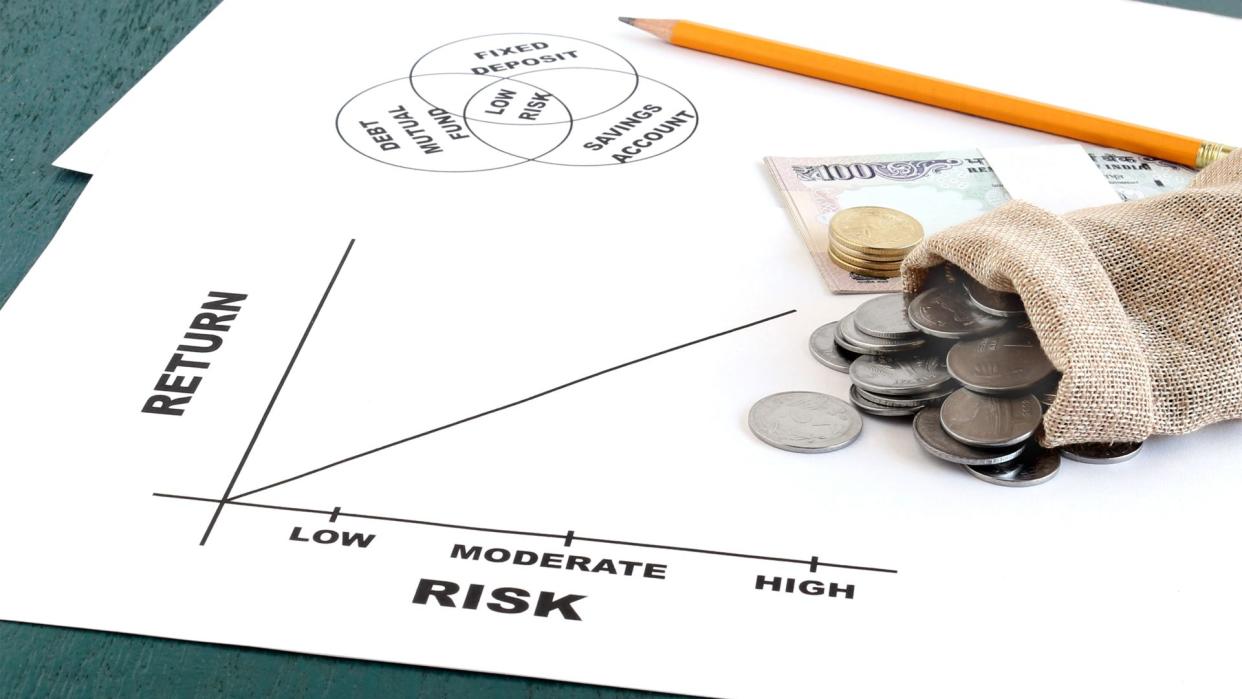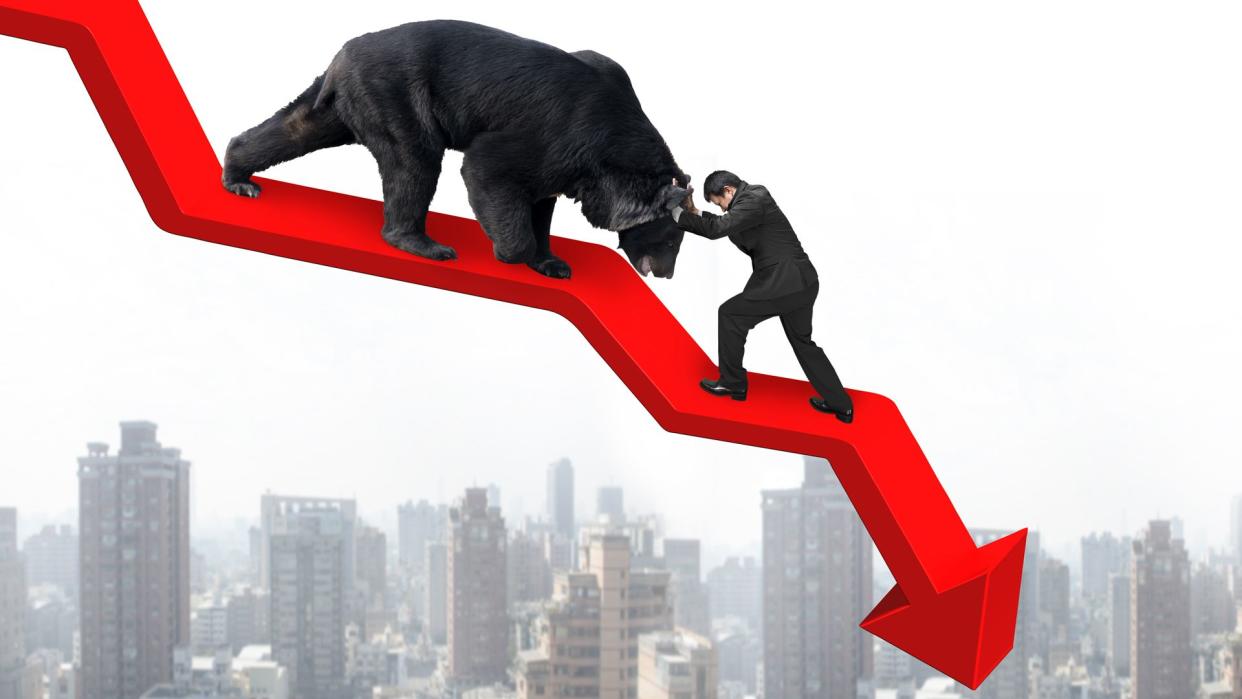Answers to the Investing Questions You’re Embarrassed To Ask

Investing can seem overwhelming when you're a beginner, and rookie investors can make mistakes. If you're just getting started, there are some fundamental concepts you might not know. While you certainly don't need to be a finance expert to begin investing, it helps if you are familiar with those basic terms.
Read: The Top 10 Stocks for 2021
Learn: 4 Investing Lessons the Pandemic Has Taught Us
The following 24 questions and answers amount to a beginner's guide to investing, along with some additional background information to help you learn how to invest. Don't be embarrassed if you don't know the answers to these questions -- even professional investors didn't know the answers at some point. Rather, read through the answers and get informed about how to invest.
Last updated: June 23, 2021

1. What Is a Stock?
A share of stock represents ownership of a company. When you buy 100 shares of Facebook, for example, you are actually a part-owner of the company. Facebook has more than 2.8 billion shares of outstanding stock, so your 100 shares represent an almost immeasurably small percentage of the company. But you're still an owner, participating in the fortunes of Facebook along with millions of other owners.
The stock market can seem confusing to beginners, but if you start by tracking shares on the financial news channels, you'll develop a better understanding of how stocks trade.
Find Out: Do You Invest Like These Millionaire Stars?

2. What Are the Dow and the S&P?
When people say "the stock market" was up or down, they are usually referring to one or more of the major stock market indices -- the Dow Jones Industrial Average ("The Dow"), the Standard & Poor's 500 Index ("The S&P 500") or the Nasdaq Composite Index ("Nasdaq"). Each represents a different slice of the market, but all attempt to reflect the movements of the stock prices of various companies.
Different stocks comprise each index. The Dow consists of 30 large, well-known companies that are industry leaders, such as Coca-Cola and Microsoft. The S&P consists of 500 large companies representing approximately 80 percent of the value of all publicly traded companies. The Nasdaq is a blend of larger and smaller companies and features popular technology stocks like Apple, Amazon and Facebook.
When profits at any individual company are good, its stock price tends to move up. When the bulk of companies are doing well, the market as a whole, as represented by one of these indices, will move up in price as well. For the Dow, the index price is the total price of its 30 companies divided by a number known as the "Dow divisor." For both the S&P and Nasdaq, the index prices are computed like the Dow -- total of stock prices divided by a divisor -- except that the stocks are weighted, meaning the largest stocks carry the most influence.
Look: Reasons These 10 Hot Stocks Might Not Survive 2021

3. How Do I Invest?
Investing means buying a security in the hopes that you will receive more out of it than you put into it.
There are many different kinds of investments, but the most basic differentiation is "growth vs. income." With a growth investment, like a stock, your goal is to have the price move up so that you can eventually sell it at a profit. With an income investment, like a bond, your main goal is to generate regular payments of interest or dividends.
You can begin investing by opening an account, making a deposit, determining your investment objective and selecting appropriate securities to help you reach your goals. If you're just starting out, an investment advisor can help teach you how to start investing.

4. What Is a Bond?
A bond is an income-generating security that pays you a stated interest rate until it matures, or returns your invested principal. When you buy a bond at its initial offering, you're essentially loaning money to the issuer. In exchange, you'll receive the quoted interest rate for a specified term, such as 10 years. At the end of the term, known as the maturity date, the bond issuer will pay off the face value of the bond, which is usually $1,000 per bond.
While bonds can fluctuate from day to day based on the movements of market interest rates, they're generally considered income investments rather than growth investments.
Save For Retirement: The Best Roth IRA Accounts for Your Nest Egg

5. What Is a Mutual Fund?
A mutual fund is a way for multiple investors to pool their money together so that a professional money manager can invest the funds collectively, according to stated investment objectives.
When you buy a mutual fund, you have an ownership stake in the invested pool of money. A stock mutual fund, for example, might own hundreds of individual stocks. When you buy the fund, you own a certain percentage of every one of those stocks. This is an easy way for you to buy a diversified portfolio without having a large sum of money to invest.
Additionally, the stocks within the fund are bought and sold by a professional investor, so you don't have to spend hours researching hundreds of stocks -- you can just rely on the expert.

6. What Is an ETF?
ETF stands for exchange-traded fund, which is essentially a cousin of the traditional mutual fund. Exchange-traded funds, as the name suggests, trade on an exchange like a stock. This is different than a traditional mutual fund, which does not trade on an exchange and instead must be purchased directly from a mutual fund company. Exchange-traded funds can be bought and sold whenever the market is open, whereas traditional mutual funds can only be purchased once per day, typically after the market has closed.
Many ETFs invest in specific market indices or sectors, such as the S&P 500 Index or the biopharmaceutical sector. When you buy a share of an ETF, you're participating in the ups and downs of the ETF portfolio. As such, you can construct a portfolio of ETFs according to your investment objectives.

7. How Much Does It Cost To Invest?
A commission is the fee you pay an agent or broker to make a trade for you. If you buy a stock, for example, you might pay less than $5 per trade at an online broker or hundreds of dollars at a full-service broker, depending on the number of shares involved.
You can also choose to hire an investment advisor that charges an annual fee, which typically averages about 1% per year. Some mutual funds charge fees of 4.25% or more to buy or sell shares, while others are no-load, costing no commission at all. However, most funds and ETFs do charge annual fees to cover expenses.

8. What Is the Difference Between an Online Broker and a Full-Service Broker?
Online brokers such as TD Ameritrade offer the convenience of internet-based investing along with lower fees. While some online firms have real-life brokers that you can visit in an office, their focus is generally on electronic investing, with research and trading portals provided on their websites.
Full-service brokers, such as UBS, typically charge much higher fees but provide more personal and wide-ranging services. Full-service brokers can do everything from developing personalized investment strategies to sending international wire transfers and constructing comprehensive financial plans, incorporating end-of-life or business transition strategies.

9. What Is a Robo-Advisor?
A robo-advisor is an investment firm that manages money for a low cost, typically 0.25% of invested assets. Robo-advisors like Betterment or Wealthfront usually match one of various pre-constructed portfolios with the investment objectives and risk tolerances of investors who sign up for the service.
Robo-advisors are gaining in popularity since they are easy to understand and cost-effective. However, they don't offer personalized portfolios or much in the way of full-service investment advice.

10. What Is Diversification?
Diversification is the concept of not putting all your eggs in one basket.
If you invest all your funds in a single stock, for example, you run the risk of losing everything you have if the stock tanks. If you own a portfolio of different stocks and bonds, on the other hand, you won't torpedo your whole financial plan if one of your investments loses money.
Diversification also tends to smooth out the ups and downs of your investments, as a properly constructed portfolio will have securities that don't trade in tandem with one another. This means some will go up while others go down, rather than having everything go up and down at the same time.

11. What Is an IRA?
An IRA, or individual retirement account, is a long-term investment account that carries certain tax advantages.
A traditional IRA can give you a tax deduction when you make contributions, and you'll benefit from avoiding taxes on your earnings while they remain in the account.
Once you start taking them out, at age 59 1/2 or later, your earnings are taxable. A Roth IRA doesn't grant you a deduction on your contributions, but you'll avoid taxes altogether on your distributions. Either account is a way that you can make investments for your retirement while enjoying tax benefits.

12. What Is a 401(k)?
A 401(k) is similar to an IRA except it is offered to employees by companies, rather than being bought by individuals.
Just like an IRA, your 401(k) contributions will go in before they are taxed, and they will grow tax-deferred, with the only tax paid on distributions. A 401(k) plan has certain advantages over an IRA, such as higher contribution limits and the ability of an employer to make contributions on behalf of an employee.

13. What Is an Annuity?
An annuity is an investment offered by an insurance company.
A fixed annuity pays a stated interest rate for a predetermined number of years or for an entire lifetime, starting immediately or at some time in the future. A variable annuity invests your funds in a variety of subaccounts that are similar to mutual funds. The amount you receive in retirement income is based on the performance of those accounts.
Annuities charge a number of different types of fees, along with penalties for certain withdrawals, so make sure the benefits you are receiving outweigh the costs.

14. What Is the Time Value of Money?
The time value of money is an important concept in investing, as it states that money in the present is worth more than money in the future. The reason for this is that money you have today can earn interest and grow in value for you over time, while money in the future has less time to appreciate.
For example, if you put away $550 per month for retirement when you are 25, you'll have over $1 million by age 65. If you wait until you're 45 to put away that same $550 per month, you'll only have about $243,000 by age 65, assuming a 6% rate of return in both cases.
This demonstrates the power of compound interest, which is defined as earning interest upon interest. For example, if you earn 10% on $10,000, you'll earn $1,000 interest, giving you $11,000 after one year. If you earn 10% again the following year, you'll earn $1,100 in interest, not just $1,000, giving you $12,100 after two years. Over time, compounding can greatly improve your returns.
Check Out: 13 Toxic Investments You Should Avoid

15. What Are the Kinds of Risk?
All investing involves risk, and there are many different kinds. The ones that most stock investors worry about are market and business risk, representing the risks that market forces or corporate decisions will make a stock's share value fall.
Inflation risk is a concern for bondholders, as inflation erodes the value of any investment with a fixed rate of interest. If prices are 10% higher five years down the road, the 4% you earn today will buy you less in the future than it can today. Interest rate risk is another concern for bondholders, since rising interest rates bring down the prices of existing bonds.

16. How Can I Make $1 Million?
No one can guarantee that you can earn $1 million, but to give yourself the best chance, you'll need to invest early and often, according to a sound investment plan.
If you start young enough, it's actually not too much to ask that you could have $1 million by retirement. The long-term average return of the U.S. stock market is about 10% per year. At that rate, it would take less than $190 per month for a 25-year-old to reach $1 million by age 65. Since no investment results are guaranteed, however, the best strategy is to save as much money as you can, starting as early as you can.

17. How Much Should I Save?
Many financial advisors suggest that you target saving 10% to 15% of your paycheck. If you find yourself with additional disposable income, save as much as you can.
One good strategy is to save 10 percent of your regular paycheck, then add whatever bonuses or raises you get to your savings. Since that money is "extra money," and you've already shown you can live on the amount of your original paycheck, you should be able to save any extra payments.
Read These: 6 Best Investing Books for Beginners

18. Should I Invest First or Pay Off Debt?
Experts are divided on this issue, but for some, it comes down to simple mathematics. If the interest rate you're paying on your debt is higher than the amount you can reasonably expect to earn on your investments, you should pay off your debt first.
For example, if you have $10,000 in credit card debt that is costing you 24 percent in annual interest, you should tackle that debt first. If, however, you transferred your debt using a zero percent balance transfer offer, you might consider investing your money and using the gains or interest to pay off your debt. As a general rule, however, experts agree that you should pay off consumer debt, like credit card balances, as rapidly as possible.

19. What Is ‘Reminiscences of a Stock Operator’?
"Reminiscences of a Stock Operator" is a popular work among Wall Street traders for its insights into the investment world.
Written by Edwin Lefevre in 1923, it's a thinly veiled biography of Wall Street trader Jesse Livermore. The book is a good read for beginning investors to help them understand how stock trading works and to pick up some investing wisdom along the way. One of the many famous quotes from the book is, "Men who can both be right and sit tight are uncommon."

20. What Does ‘Pay Yourself First’ Mean?
"Pay yourself first" is an investment adage that stresses the importance of prioritizing savings over other obligations.
When you receive your paycheck, you "pay yourself first" by setting aside a certain percentage immediately into your savings or investment accounts. Then, with the remaining money, you can make discretionary purchases. The concept behind "pay yourself first" is that if you buy clothes, go out to eat and travel before you allocate money to savings, it's human nature that there will be nothing left. Putting that money into savings first avoids this natural tendency.

21. Is Buying Stocks the Same as Gambling?
Since stocks can fluctuate rapidly and dramatically, it might seem like the stock market is just a big casino. Some stocks certainly do fit that classification, such as low-priced stocks that are touted by professional marketers. However, a long-term investment strategy using stocks at its base is anything but gambling.
There has never been a 20-year period in history in which the S&P 500 posted a negative return, and the long-term average return is just about 10 percent per year. While there will always be short-term fluctuations in which the stock market can drop 10%, 20% or even more, the longer your hold your stocks, the less likely you are to lose money.
Discover: What $1,000 Invested In Stocks 10 Years Ago Would Be Worth Today

22. What Is a Correction? What Is a Bear Market?
A correction is typically defined as a drop of at least 10% in the stock market. A drop of 20% in multiple indexes is traditionally called a bear market.
The unfortunate truth is that bear markets and corrections occur with regularity -- about once a year in the case of a correction, and about every three-and-a-half years in the case of a bear market.
However, these drops have proven time and time again to be buying opportunities for long-term investors. For example, the stock market selloff that ran from 2007 to 2009 registered an ultimate drop of 56.4% in the S&P 500. By 2017, however, the S&P 500 had almost quadrupled in value from its bear-market low.

23. What Is the Key to Long-Term Returns?
While many investors are on the lookout for the next big thing -- something that will double their money overnight -- the truth is that the key to long-term returns is time and compound interest.
Whereas short-term returns are unpredictable, consistent investing is the way to ride out market fluctuations. Searching for high, immediate returns involves taking on a great deal of risk. According to the "rule of 72," the time it takes an investment to double is roughly the number 72 divided by that investment's annual return. So, if an investment returns 10% per year, you can expect your money to double in about seven years. Patience and sticking to a long-term investment plan are the keys.

24. How Much Money Do I Need To Retire?
Financial advisors suggest you'll need somewhere between 70% and 80% of your pre-retirement income to enjoy a healthy retirement. Use these figures as a guideline to calculate how much income you need in retirement.
Once you've decided how much of your pre-retirement income you'd be comfortable living on, subtract any pension or Social Security income you anticipate receiving to find the amount of money you'll need your investments to contribute. Using a 4% withdrawal rate, as suggested by financial advisors, solve for how much money you'll need to retire. For example, if you can live comfortably on $60,000 per year and anticipate $42,000 in pension or Social Security income, you'll need your investments to kick in $18,000 per year. At a 4% withdrawal rate, you'll need $450,000 in savings, since 4% of $450,000 is $18,000.
More From GOBankingRates
This article originally appeared on GOBankingRates.com: Answers to the Investing Questions You’re Embarrassed To Ask
